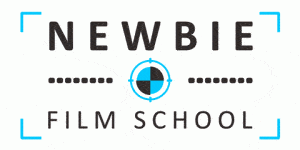For a beginner, learning the basics of editing or learning an editing software is quite easy. But, editing is not only a science, but you need to also tell an engaging story by the right choices of shots. How to master the art of storytelling is what will separate you from being a professional editor to a newbie cutter. To make your path comfortable, I am disclosing many effective professional film and video editing tips for beginners which will make you a confident editor.
Tip 1: You are a Storyteller too
The first thing is to grab the script and read it few times before you start assembling your shots. Try to recognize the soul of the story. What is the story about in one line. Read the logline or get a printout of it and stick it to the wall. A filmmaker always reminds himself of the logline during the shoot, as an editor, it is your job to bind the story together along the logline. It will help you to keep a focus on the story when you assimilate the scattered shots to weave it into an engaging story.
I strongly recommend reading Joseph Campbell’s The Hero’s Journey. Once there is clarity on the subject, you will deliver results more efficiently. If you understand every character’s emotional points in his exhaustive journey, you can create a compelling drama. It will also help you to efficiently mend the directional or production flaws by eliminating what is not required. You will be the next level storyteller by refining the story to engage it better.
Tip 2: Enhance the Emotion:
How will you engage an audience with your editing? The only reason a film engages with an audience is its strong emotional connect. The audience gets emotionally pinned to the characters and react accordingly to the challenging situations. So, you have to be aware of that significant cut which will infiltrate that kind of emotion, the filmmaker intends to infuse. The character’s emotional journey hence becomes an integral part of the viewer’s journey. The editor’s job is to subconsciously shift that emotional journey into the heart of every audience.
You can only do this by recognizing the emotion you need to arouse for a particular piece of the story. How to make the audience feel happy or sad, feel excited or depressed, is the purpose. You should then work towards strumming that emotional chord. If you achieve this piece, you will be a successful editor bereft of any expert technical skills. Always strive for the right emotions to the style.
Tip 3: To Cut or Not to Cut
As a beginner, you will always be under a dilemma of when to cut the shot or visual. When you are unhappy about not getting a cut right, or when the cut doesn’t go seamlessly with the previous one, it becomes very hassling for the editor. Should it be four frames later or three frames early? You take a second opinion, and the feedback is that something is not right with the shot. “I can’t figure what it is, but something is off.” This type of questions puzzles you even more.
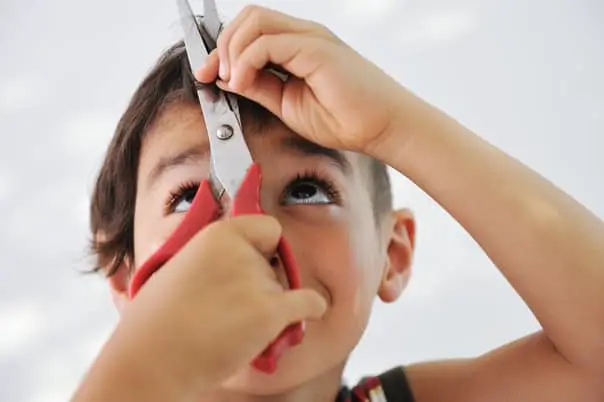
As a beginner, it is natural to struggle with the timing. Many don’t possess the talent to understand timing. When such dilemma of the timing of a cut haunts you, always trust your heart- I mean the heartbeat. I have invariably noticed cutting on the pulse beat, or the heartbeat works. You can also lay an audio track of similar paced music underneath the visual and cut according to the beat. The timing looks more or less fine with this technique.
Tip 4: The Power of Rhythm
Rhythm is a significant element of storytelling. Hence, the burden of rhythm is on the shoulder of the editor. I have noticed many newbie editors struggle with it. It is a very intangible thing. To find a rhythm of a story becomes tricky for a beginner as you can’t define it.
Rhythm is also the pacing of specific pieces of the story with a holistic view of the whole story. The rhythm works according to the plot points and the various emotional aspects of the story. The editing has to slow down or quicken depending on the rhythm. I again suggest trusting your story and the journey of the character as well as to how that piece of the story needs to be advanced. At what pace with how many highs and lows. If the rhythm is not right, it may endanger the tone of your storytelling.
How to understand the rhythm? Do you remember how our grandma used to narrate tales? When the drama or the tension builds up, recall how the speed of her flow and voice used to increase and then suddenly she would slow down take few dry gulps and then start from a lower tone.
It is how you do it in films precisely. Watch as many movies you can, to understand rhythm from editing style.
Tip 5: Shed the Fat
Now, you have to browse through hours of footage to find those right clips to assemble in the timeline. It is a tedious process. A new editor tends to line up diligently or use most of the approved clips and shots covered to add variety to the viewing experience.The producer will genuinely appreciate that you included all those shots. But, when it comes to finding that emotional connection in the scene, you will find the association quite cumbersome and unnecessary.
The filmmaker covers the same scene from multiple angles and perspectives. But, he doesn’t do it with the intent to put bits of all the shots to make the movie look like a big production. He wants to find that drama which is difficult to spot during the shoot because of its non-linear nature. He, therefore, covers it from various angles so that the editor finds the right rhythm.
Try editing with the least shots to tell the story. First, make it smooth and seamless so that you can communicate correctly. Also, least shots don’t mean only one or two shots for the whole scene. If you put a lesser number of shots in an extended scene, it will be utterly boring. Again if it does the job beautifully, then might as well go for it.

Less is more. It is always advisable to lay the master first. Then, as and when, you feel the need to go closer to the characters, put the close shots over it. Always follow the drama and the emotions. If the feelings look strong between two characters, then slowly add the other angles. Always try to shed the unnecessary fat in the scene. Too many things are a distraction from the primary purpose.
6: The Drama is in the eyes
In a scene where characters are present, we tend to peek into their eyes to find what are they trying to say or hide from us. We may listen to their words, but humans are more receptive to their body language and their eyes. We subconsciously dig deep into their soul, trying to see things from our point of view. It is where great actor become so alluring to their fans because they emote through their eyes.
The drama is in the character’s eyes which an audience follow to feel the whole conflict and emotion of the character. It is therefore essential to go use close-ups for scenes to get close to the actor through their eyes. If you use full shots, you may miss how a character or the characters are reacting to a particular situation intimately.
Eyes are such powerful tools in editing; you can play with audience’s mind while telling a story. They follow the direction of the eyes of the actors. You can use it to your advantage by putting cutaways to enhance the drama or hiding particular pieces which you would reveal later or may want to ignore it at all.
7: Don’t show the Full crap
I mentioned earlier that less is more. Yes, you can create a lot of drama by not showing everything. Editing is also about choices to which shots to keep and which one to throw in the bin. The choice of narrating a story by underlining and stressing an emotion or subtly tell it and leave it to the viewer’s imagination. Alfred Hitchcock was the master in not showing the drama fully and cutting before the conclusion of the scene.
One of the exciting technique is to edit a whole scene and get rid of few opening shots and the ending shots. German filmmaker Michael Haneke is a master in doing so by directly jumping into the drama and exiting before the scene ends. It is like you enter a room in between an argument between two people and exiting before you know who won the debate. By leaving a lot into viewers imagination, keeps the engagement going for the audience as he would like to know what happened there.
Nowadays the attention retention is a challenge for the filmmakers. You should always get into and cut away from a scene which an audience can easily decipher without showing that piece of the story.
8: Prettiest may not be the best
Big blockbuster is full of stunning imageries. The filmmakers invest a lot of time to capture those eye candy moments. These fabulous compositions come from perfect lighting, grand posturing, right moments, Haunting environments and colorful backgrounds. It needs a talented cinematographer to painful capture these postcard visuals, patiently rendering through his roving lens. Also, the costs involved to shoot this imagery are enormous. So, when these beautiful, stunning cinematic captures are presented before you in the form of raw footage, as a newbie editor, you feel obligated not to miss out on these exclusive shots in the timeline. You tend to ignore the fact that it may not flow into the rhythm of the scene.
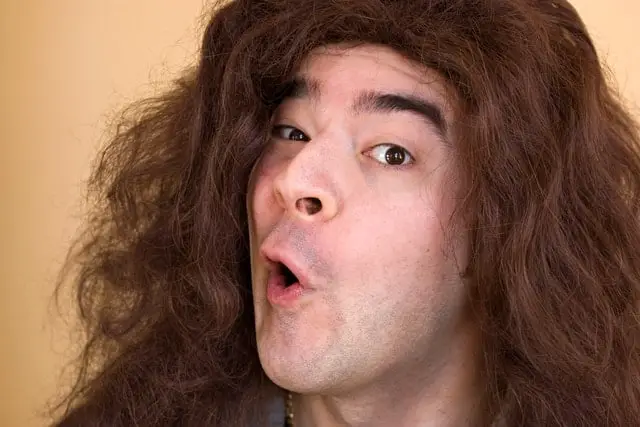
You always have to make choices between the beautiful shots and usual ones.As a new editor, you should ever trust the flow. When you assemble them in a timeline, and they don’t the fit the bill, my suggestion is to disconnect with the beauty and remove them from the timeline. It is a tough decision to make. There is no harm in lining up the breathtaking visuals in the lineup when you are doing a rough edit. Initially, you should prefer them over the ordinary, but when it comes to storytelling, you have to think hard if it is hindering the flow of the story. They can be very distracting sometimes when you have worked hard on creating the right dramatic tone.
It is a tough decision to make for a beginner as you tend to get seduced by the beauty of the shots and compromise on the flow of the edit. As a natural instinct, you will itch to include them. Instead, keep them for cutting fantastic montages or promo shots. They need not be involved in the scheme of storytelling if they don’t fit the bill. You have to be a heartless person and never carry any guilt in dumping it over the hard work, time and money that the filmmaker invested in producing it.
9: Become a Ruthless Psycho
In continuation of the previous tip, we now move from the beauty to the beast. In this case, you are the beast, that ruthless and heartless animal who should have no strings attached to the movie piece and can remove what is unnecessary.
Movies usually have a much more significant length in their first few cuts. The final cut is trimmed to the end to fine tune the story with the right dramatic points. When you see the uncut scenes from movies, you may observe that on many occasions, the whole sequence of the film is cut off. In some cases, you will notice the most thrilling scenes don’t find their way into the final cut. Some great performances also fail to make it to the theatres. A significant sequence, some terrific performance, beautifully directed scenes or a well-choreographed scene will never make it to the final cut if they don’t flow consistently with the story.
During editing, we have to observe the story at two levels – Micro level and Macro level.
The Micro-level look into the flow of scenes in a sequence or the flow of shots in a scene. It is where the eye candy shots and stylish techniques don’t find its presence in the final course.
Macro-level is when you remove certain scenes or sometimes a whole sequence from timeline if the part deviates from the story. You should show no mercy in deleting such scenes if it derails from the story track.
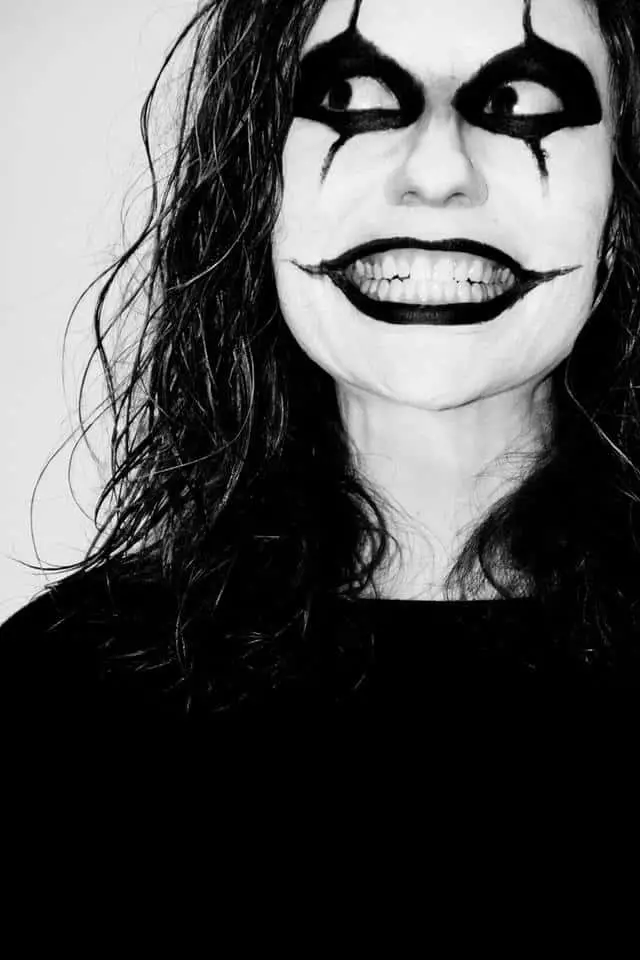
Be ready to be labeled as the ruthless psycho, who mercilessly hacks scenes and sequences from the movie. You can be the most hated person, but you should never compromise on truthfully telling the story. So be a proud ruthless psycho.
10: Know the Grammar
Movies follow specific grammar in its visual communication through the cuts and transitions.But, you may find the syntax missing in movie promos, music videos or short montages. How you place or arrange words in a particular manner in literature, visual communication also needs rules to put the shots next to each other.
The first rule that comes to my mind is the 180-degree rule or the axis. It is an essential doctrine as it gives the sense of the spatial relationship between the characters and the location. When you assemble the shots, make it a point to provide information on the geography of the site. The audience subconsciously gets the hang of the placing of the characters in the location. If you don’t set it right, it will confuse the audience.
The job of the editor is to keep your cuts invisible. The cuts should be so smooth that the clips arrangement flows like a story and cuts go invisible like a blink. The edits look disruptive when you do something wrong in the edit. The matters can be worse when you don’t match cuts, break the axis, juxtapose the shots with improper perspectives. These are fundamental grammar mistakes which an editor should keep it in mind.
11: Know it all
There are more than the basic editing techniques a newbie should learn. Knowing the grammar is fine, but the mastery comes when you know how to bend the rules. Rules are meant to be broken, but it can only happen you practiced the rules, and it comes to you as second nature. Montages, action scenes, favorite music videos usually break the editing rules, and you should know how to edit them as they may or may not follow the grammar.
Hand to hand combat scenes are fast cuts with the application of force and its result. You should learn how to edit the chase sequences, or the fight scene reaches a crescendo. It is very similar to a dance performance, and you are the choreographer. The montages are random images which either show a transition of time or what is inside the mind or they act as transitions to blend two sequences. Montages usually are cut with good rhythm and music. As a beginner, you should quickly learn how to approach them differently and yet have a purpose behind them.
12: Transitions should have a purpose
There are tons of camera and post effect transitions used to take the story forward. Taking the story forward is not the only purpose. Transitions denote transiting through time, periods, sequences or eras. It also is efficiently used to travel between people and places. Where cut is also a transition but transitions are more known for its dissolves, fades and wipes.
Dissolves are usually used to show a passage of time where are fades move from one setup to another. Fade to black or fade in denote end and start of a sequence respectively. With the advent of graphics and video compositing software, you can create a custom-made transition to demonstrate various styles and techniques in your storytelling. Transitions are essential and should be used sparingly for a purpose.
13: Cut to Cutaways
Many term Cutaways as transitions, but I feel it is not a transition as it is inside a scene. Also, you seldom use it to transit between two scenes or sequences. You may begin or end a scene with a cutaway, but that doesn’t necessarily become a transition.
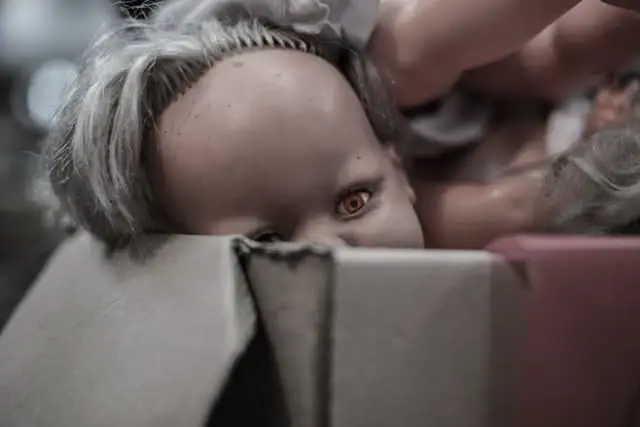
Cutaways are very useful in revealing or enhancing dramatic points.The static shots of the dolls in Child’s Play and Annabelle creates the scare, even though they don’t do anything. But the horrific precedence it creates in the minds of the audience is phenomenal. Similarly, in the cowboy movies, the duels are filled with cutaways to create tensions. You can cutaway to the shots of clock hands or eagle’s eyes to build up the moment of drawing the guns. It also helps in reveal or underline a hidden or reasoning of information inside the scene.
Many editors smartly use cutaways to hide technical flaws or intentionally distract the audience from revealing the actual action. Cutaways may look ordinary but are a handy tool to tell a story.
14: Don’t Showoff
Now you have started learning the ropes of the editing techniques. You start getting appreciated for your work, and it gives you more confidence to make right decisions. But, since you have also learned the new techniques and can replicate the contemporary style, this doesn’t mean you start to show off.
Showing off in editing is the most dangerous ploy for an editor. If people start to see your style and techniques, it is not a right zone to tread. It means people have started noticing your style and not your storytelling. You are yet to evolve into a good editor. The cuts have to be invisible especially when you edit a movie. Always keep in mind or remind yourself to keep things simple. You shouldn’t overrule the film. It is a red flag for you if people may have liked the juxtapositions of your cuts but failed to connect with the story emotionally. It is a pattern visible in mostly newbie’s films.
15: Keep Abreast with Modern Techniques
Now what I am going to say is contradictory. On the other hand, I am suggesting to keep things simple on the other side I advise to keep yourself abreast with the latest editing techniques and ways of storytelling. It means that technology is fast changing in the blink of an eye. The software and hardware are also adapting to optimize the productivity of the editor too. New filters, new menus and presets get introduced to make things faster and more comfortable for you. An editor is appreciated if he is a quick worker. Keeping abreast with the trends in the editing industry helps you to stay a step ahead of everyone.
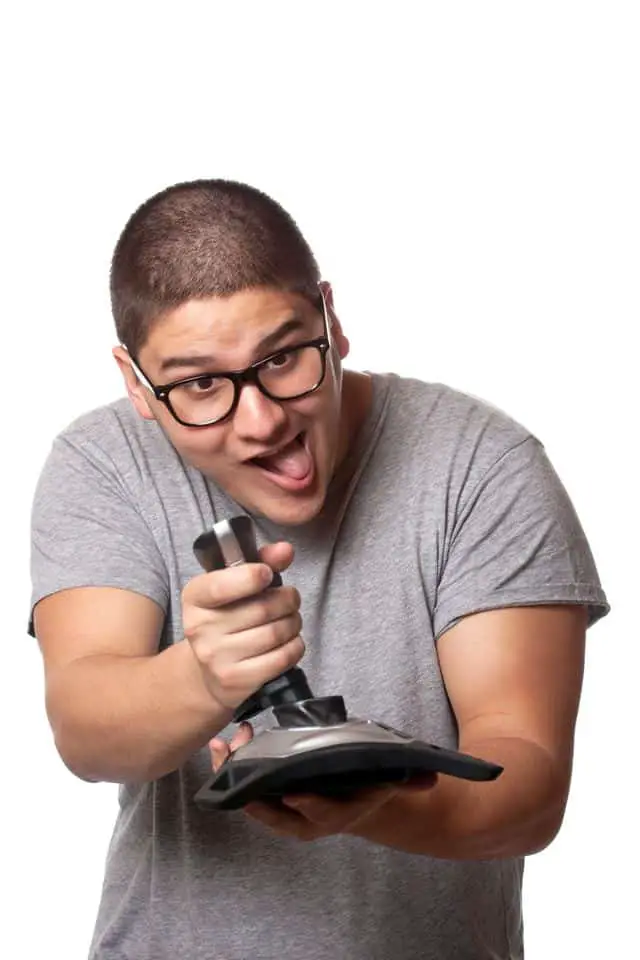
Also, keep watching good work wherever you can.Keep your eyes and ears open to various editing trends all over the world. Watch movies in film festivals to understand how the other part of the world is telling their stories. Always be a student of the craft. It will make you humble and better. Try adopting the ones you loved. Join the editor forums and community to learn and share techniques. They are an excellent platform to have to get help immediately.
16: Can you Dance to the Music
I have seen many editors struggle with the beat and rhythm. It is not easy to learn the game of beats and rhythm. It is natural to oneself. You may have two left feet, and you may not sway to the right moves to the music. It is not a problem, but I have experienced the cuts in their edits are little off than the sweet spot.
You can correct or improve on it by listening to music of your choice a lot to feel the sense of music into your soul. Another technique is to listen to the songs with the moods you want to pour into your edit. The spirit creates that beat inside you, and you can edit better.It is also advisable to lay a music track below to cut on the beats. It is an essential practice, but if you can feel it, you will nail it.
17: Choose the Right Weapons
For an editor to handle a project, you have to know your abilities and skill sets. Always choose your arsenal wisely. It should still be project specific. Estimate the memory your system requires and the time to render large effects. Can the video card handle good color depth? These are few of the large queries you have to envisage before going to start the project,
Always pick the hardware and the software which are suited to your skills. Choose the right weapons to deliver the best result.
18: The Geeky Dude
When you are new, the biggest challenge is the awareness of the technical know how. Which compression requires which codec? Why the card is not receiving the HD signals. The bitrates, frame rates, and the various technological jargons take the fun of editing away. As a newbie, you just want to jump the gun and start editing the shots. But, technical ignorance will become your shortcoming to success.
Make friends with the technology, and it will help you to select your tools better. For being a successful editor, you have to be the geek.
19: Master Productivity
To become efficient in your work, you need high discipline in your work approach. If you randomly do things, you will end up being messy. Always device a proper file naming and a file hierarchy protocol. Keep separate bins for your scratches and approved work. In this way, you can slowly replace yourself with assistants for faster processes.
Maintain a strict editing schedule for yourself. Always work towards getting things done in a faster and better way. People save essential files by wrongly naming them in folders and forget to keep track of it. When you need it, you waste precious hours.Remove unwanted garbage which may slow down the machine. These mini habits can save days of work if you do it efficiently.
20: Breathe some Fresh Air
Sitting nonstop in closed environments scrolling through the same footage hundreds of time can jam your brain. Editing is also a very lonely process. You need to have different perspectives to cut your scene. Closed environments can close your mind too.

You need those breaks to regain the energy and freshness of your approach. Sometimes taking a break can kill the boredom also. Always maintain a routine of taking small breaks. Leave that space and take a breath of fresh air and try to disconnect from the work you were doing. Take a walk, and then you will notice how ideas flow. It will re-energize your brain.
21: Save the Titanic
The most significant responsibility of the editor is to safeguard the precious footage and stocks. As a routine, you should always keep in handy storage systems for the data backup. Hardware gets corrupt too, or the system crash can delete the data. The footage is just not storage of shots; it is hours and hours of hard work and perseverance. A ton of money is at stake too. When you handle the footage, you need to take care of them. Always keep solid backup storage plans to save the Titanic from sinking.
The primary function of editing is to cut the ins and outs of a shot and align them in a sequence to make some sense out of them. A sense of telling a story by taking it forward or guiding them into the desired path. Along the way add layers of tips and techniques to enrich the storytelling.
For a beginner, I always stress to keep things simple and straight. But, it is not easy to keep things simple as it may seem. In such situations, go back to the script and you will find the way out. The purpose of these film and video editing tips for beginners is to make you a better editor. So, try reading this blog over and over. Keep it handy as a ready reckoner to refer it from time to time. I hope it will find answers for you.
If you find any other valuable tip to add, then please comment below. I will highly appreciate it.
